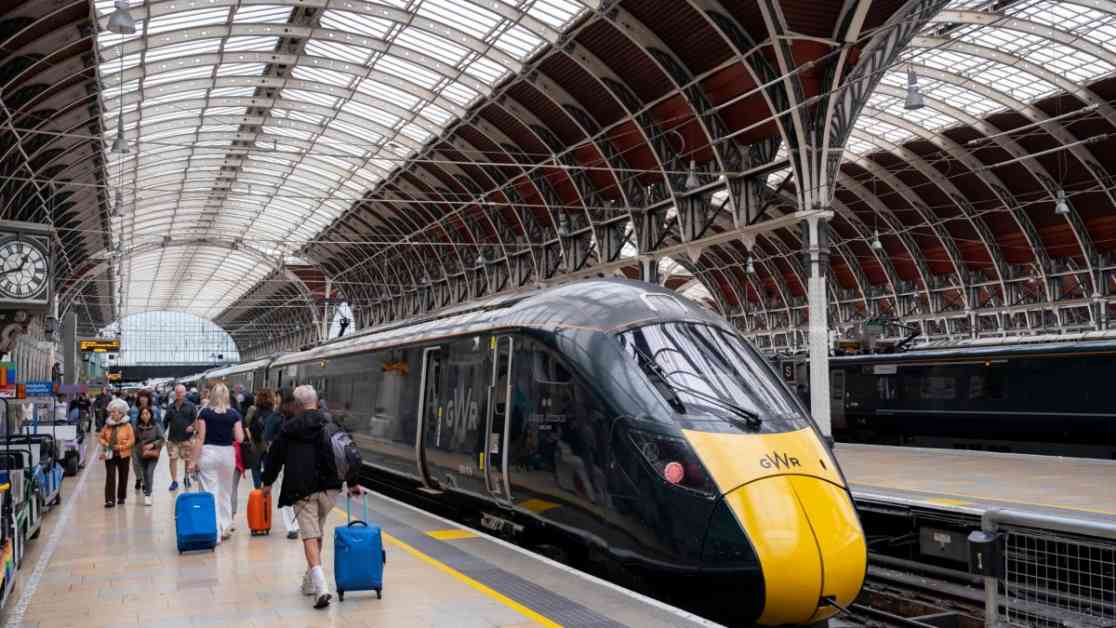The Complexity of Britain’s Railway Issues
Britain’s railway system has long been a topic of debate and contention, with various stakeholders proposing different solutions to address its challenges. One common suggestion is nationalisation, which involves bringing the railways under public ownership. However, as Andrew Gilligan argues, nationalisation might not be the panacea it is often touted to be. While it may simplify the system, it could exacerbate existing problems, particularly in terms of cost and efficiency.
Gilligan points out that the issue with Britain’s railways is not just about ownership but about the complexity and cost of the system. Despite some franchises being nationalised in recent years, there has been little improvement in performance. Punctuality on certain lines remains unchanged, and operational costs are high due to outdated technology and overstaffing. These challenges are compounded by the fragmented nature of the industry, with multiple players involved in decision-making and operations.
The Case for Great British Railways
One alternative to full nationalisation is the creation of a new public body, Great British Railways (GBR), modeled after Transport for London. Under this approach, GBR would take a more centralized role in overseeing the railways, owning the track, and controlling services. By setting timetables, branding, and fares, GBR could streamline operations and improve efficiency. Private companies would still operate the trains, but under the guidance and specifications set by GBR.
This model, proposed by the Williams Rail Review, offers a middle ground between full nationalisation and the current privatized system. It aims to address the complexity and cost issues that plague the railway industry while maintaining a level of private sector involvement. By consolidating decision-making and operations under GBR, the system could become more cohesive and responsive to passenger needs.
The Challenges of Nationalisation
While nationalisation may seem like a straightforward solution to Britain’s railway problems, it comes with its own set of challenges. One major concern is the potential for increased costs and inefficiencies under a fully nationalized system. Gilligan argues that having one entity control all aspects of the railways could lead to bloated bureaucracy and higher operational expenses.
Moreover, nationalisation could empower unions and lead to more frequent industrial disputes. With a single employer overseeing operations, it may be easier for unions to disrupt services and demand concessions. This could further strain an already struggling industry and hinder efforts to improve performance and efficiency.
Additionally, nationalisation may deter private investment in the railway sector. If the government takes over all aspects of the railways, private companies currently involved in the industry may be forced out. This could limit innovation and competition, ultimately harming the quality of services provided to passengers.
Balancing Public Ownership and Private Investment
Finding the right balance between public ownership and private investment is essential for the future of Britain’s railways. While there is a case to be made for greater state involvement in certain aspects of the industry, a complete overhaul through nationalisation may not be the most effective solution. By adopting a model like GBR, the government can maintain control over key aspects of the railways while still allowing for private sector participation.
At the same time, it is crucial for the government to encourage private investment in transport and infrastructure. This can help alleviate the financial burden on the public sector and drive innovation in the industry. By working in partnership with private companies, the government can leverage their expertise and resources to improve the quality and efficiency of rail services.
In conclusion, the debate over Britain’s railway issues is complex and multifaceted. While nationalisation is often seen as a quick fix, it may not address the underlying challenges facing the industry. A more nuanced approach, such as the GBR model proposed by the Williams Rail Review, offers a path forward that balances public ownership with private investment. By focusing on outcomes rather than structures, the government can work towards a more efficient, cost-effective, and passenger-centric railway system.













